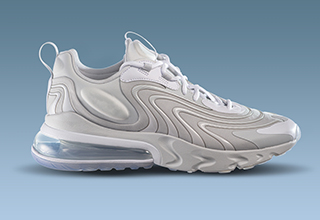In the world of digital photography and image editing, retouching is often both an essential skill and a delicate art form. At its core, retouching serves to enhance the subject by refining small imperfections, improving balance, and highlighting the most beautiful aspects of an image. However, it’s a fine line between subtly enhancing an image and overdoing the retouching process to the point where the final result no longer reflects the original subject. This essay explores the art of subtle retouching, focusing on how to improve images while maintaining authenticity. We will look at the philosophy behind minimalist retouching, the practical techniques that create a natural look, and how understanding the context of an image can guide the editing process.
1. Why Subtle Retouching Matters
Retouching has the potential to transform an image entirely, but the real challenge lies in retaining the essence of the original photograph. Subtle retouching is a balancing act between enhancing a subject’s natural beauty and ensuring that the changes don’t overshadow or distort reality. The key principle is that retouching should never be obvious; it should merely make the image look polished, not fake or overly altered. In the past decade, there has been a backlash against over-retouched images in the fashion, beauty, and advertising industries. Unrealistic body standards, airbrushed skin, and exaggerated features have fostered an atmosphere of mistrust and criticism. For professional retouchers, the shift toward authenticity has made subtlety a more desirable and admired skill. It’s about enhancing the photo to make it more visually pleasing while ensuring the end result feels authentic and grounded in reality.
Natural Beauty
Subtle retouching celebrates the unique beauty of each subject. In portrait photography, the goal is often to bring out the person’s personality and natural features rather than impose a standard of perfection that diminishes their individuality. Freckles, fine lines, or skin textures tell stories, and while some may want to tone down certain aspects, others may prefer to leave them as they are—this is where a retoucher’s sensitivity and collaboration with the subject come into play.
2. Philosophy of Minimalist Retouching
Less Is More In subtle retouching, restraint is the golden rule. This philosophy stands in contrast to the heavy-handed edits often associated with amateur or early-stage retouching. The goal is not to create a perfect version of the subject but rather to enhance the existing qualities in a way that feels invisible. If an observer notices the edits immediately, they are likely overdone. The best retouching is invisible to the untrained eye, seamlessly blending into the original photograph. The “less is more” approach means understanding when to stop. It requires knowing when an image looks natural and finished rather than being tempted to go further. Small imperfections are part of life and should not be completely eradicated. It’s important to remember that overcorrecting in one area of the image often results in the need to compensate in others, leading to a domino effect that can spiral out of control.
Fidelity to the Original Image
A core principle of subtle retouching is fidelity to the original photograph. While it’s tempting to get carried away by the possibilities of Photoshop and other editing tools, retaining the integrity of the original image should always come first. One must think of retouching as an enhancement rather than a transformation. By working in small increments, retouchers can ensure that the original textures, lighting, and emotions present in the photo are maintained. For example, skin smoothing is one of the most common tasks in portrait retouching. However, over-smoothing can create a plastic-like effect, stripping away the natural textures that make the skin look real and human. Subtle skin smoothing that retains some texture keeps the image grounded in reality.
3. Key Techniques for Subtle Retouching
1. Frequency Separation for Skin Retouching
Frequency separation is a popular technique in retouching that allows editors to separate the texture and color of the skin. This technique is especially useful for removing blemishes while maintaining skin texture. By using frequency separation, retouchers can subtly refine the skin without making it look too smooth or artificial. The key is not to remove all imperfections but to even out the most noticeable flaws, keeping the skin’s natural qualities intact.
2. Dodge and Burn
Dodge and burn are fundamental techniques used to manipulate lighting in specific areas of an image. By brightening (dodging) or darkening (burning) certain areas, retouchers can enhance the contrast and depth of a photo. The beauty of dodge and burn lies in its subtlety. When used correctly, it mimics natural lighting and enhances the dimensionality of the image without altering the underlying texture or form. It can be especially effective in portrait photography for sculpting facial features like cheekbones or adding highlights to the eyes.
3. Selective Color Adjustments
Another subtle retouching technique is using selective color adjustments to enhance the overall tone and mood of an image. For instance, a slight tweak in the warmth or coolness of an image can change the emotional impact while still maintaining a realistic look. Adjusting individual color channels can also help bring out key elements like skin tone or the color of clothing, but should be done sparingly to avoid unnatural hues.
4. Micro Contrast Adjustments
Micro contrast refers to fine-tuning contrast in very small areas of the image. This technique can bring out texture in skin, hair, or fabrics without dramatically changing the overall image contrast. By focusing on small regions, retouchers can enhance details that make the photo pop while avoiding the oversaturation of contrast that can lead to a cartoonish look.
5. Removing Distractions
Subtle retouching also involves cleaning up an image by removing distractions that take away from the focus. This could be anything from stray hairs to dust on a product or clutter in the background. The idea is to remove elements that detract from the subject without altering the overall composition or atmosphere. This technique is particularly important in product photography, where attention to detail is critical.
6. Blending Edges
When removing distractions or imperfections, it’s crucial to blend edges carefully. Poorly blended edges can create obvious retouching artifacts that break the illusion of the image. Techniques such as feathering the edges of a selection, using soft brushes, or employing healing tools can ensure that the transitions between the retouched and unretouched areas are smooth and imperceptible.
7. Sharpening and Noise Reduction
Sharpening is an important part of post-production but should be applied delicately. Over-sharpening can make an image appear harsh and unnatural, emphasizing flaws rather than enhancing detail. A light touch is best, especially around sensitive areas like skin or eyes. Noise reduction should also be applied with care, as too much can result in an image that loses its detail and looks flat.
4. Context Matters: Retouching for Different Genres
Subtle retouching varies depending on the type of photography. Each genre has its own set of priorities and its own standard for what constitutes a natural look. Understanding the context of the image and the audience for whom it’s intended is essential to knowing how much retouching is appropriate.
Portrait Photography
In portrait photography, the aim is usually to capture the essence and personality of the subject. Subtle retouching focuses on making the subject look their best without erasing their character. This means enhancing features like eyes, smoothing out blemishes, and possibly evening out skin tone but stopping short of creating a flawless or artificial result. The retoucher must remain sensitive to the subject’s features, age, and identity.

Fashion and Beauty
In fashion and beauty photography, there’s a bit more flexibility for retouching, but subtlety is still vital. The focus in this genre is often on idealized beauty, but today’s audiences are increasingly demanding authenticity. Skin retouching should be done with restraint, ensuring that the model still looks human and approachable rather than like a porcelain doll. Hair, makeup, and clothing might be enhanced slightly, but not in a way that becomes distracting.

Product Photography
Product photography often demands a high level of polish. The goal is to make the product look as appealing as possible, which may involve removing flaws in the product itself (e.g., scratches, dust, or dents). However, even here, restraint is important, as over-editing can lead to a misleading representation of the product. Customers expect to see an accurate representation of what they are purchasing, so subtle retouching that enhances without distorting the product’s reality is key.

Editorial and Documentary Photography
For editorial or documentary photography, authenticity is paramount. These genres thrive on capturing reality, and over-editing is generally frowned upon. Retouching should be minimal and restricted to adjustments like exposure, color correction, or very light blemish removal. The goal is to maintain the integrity of the scene as it was captured, ensuring that the image remains truthful to the moment.
5. Tools of the Trade
Retouching tools are more sophisticated than ever, offering a range of possibilities for enhancing images subtly.
Some of the most commonly used tools include:
● Healing Brush and Clone Stamp: Used for removing imperfections, these tools allow retouchers to seamlessly blend out small blemishes or distractions.
● Adjustment Layers: Adjustment layers allow for non-destructive editing, meaning changes can be made and removed without affecting the original image.
● LayerMasks: Layer masks enable precise control over which parts of an image are retouched, helping to keep the edits localized and subtle.
● BlendModes: Blend modes can help with fine-tuning color and lighting effects, making it easier to achieve the right balance without overdoing the edit.
● SmartObjects: Smart objects preserve an image’s original quality, making it possible to return to the unedited state if necessary.
6. Final Thoughts:
Finding Balance in Retouching Subtle retouching is an art that requires a deep understanding of both the technical aspects of image editing and the emotional impact of a photograph. It’s about knowing when to step in and when to step back, about making small adjustments that have a big impact without drawing attention to themselves. In a world where heavy retouching is often criticized, the art of enhancing without overdoing has become more essential than ever. Whether it’s in fashion, portrait, or product photography, subtle retouching ensures that the beauty of the subject remains intact, allowing the true essence of the image to shine through. By mastering the delicate balance of enhancement and authenticity, retouchers can create images that are polished yet grounded in reality.